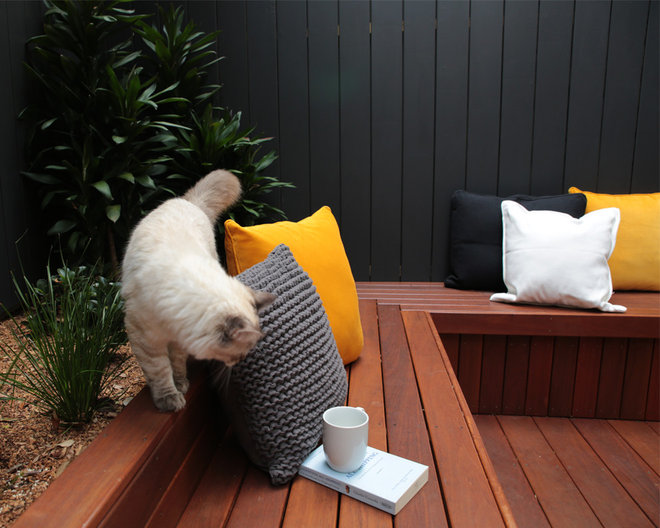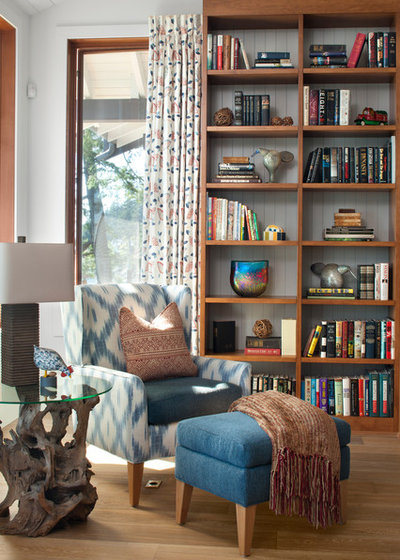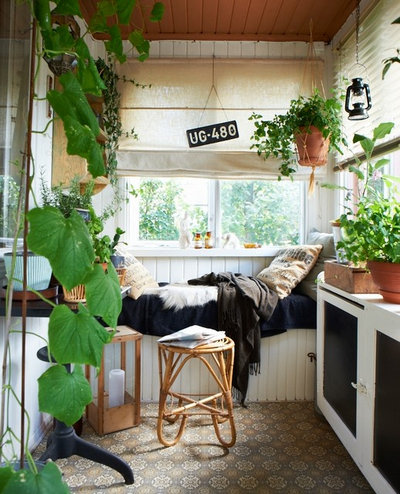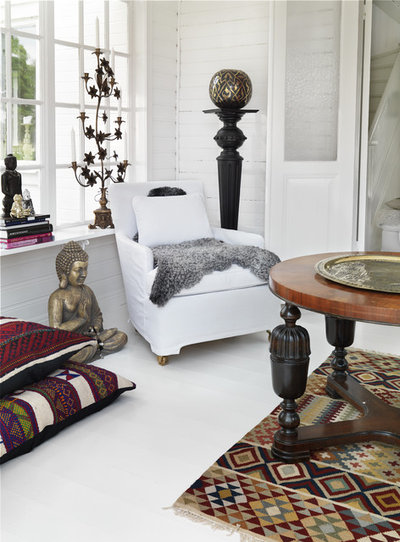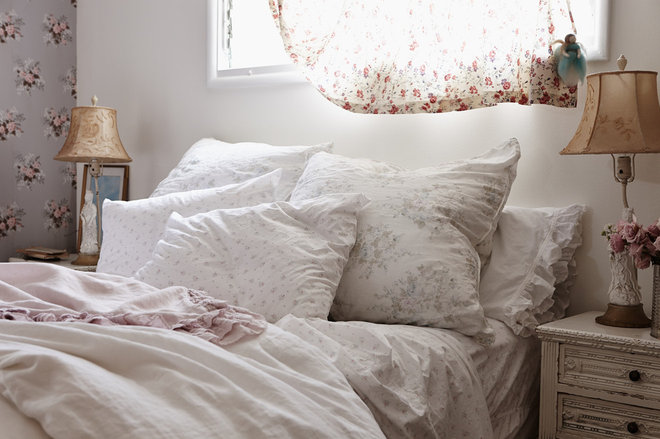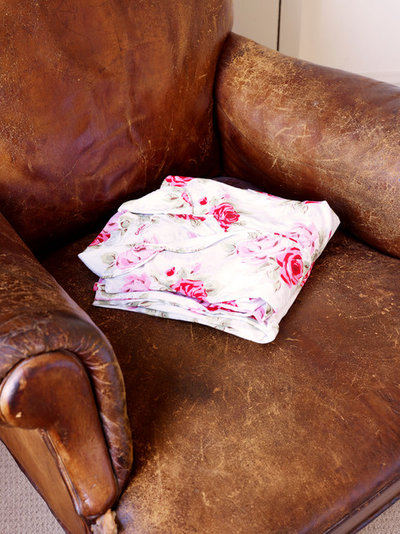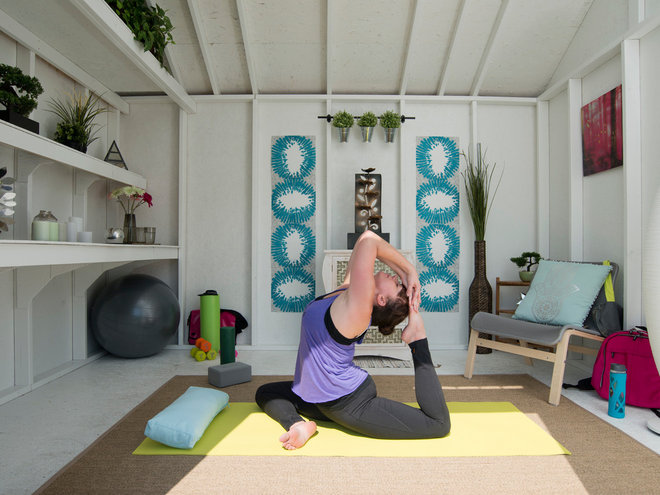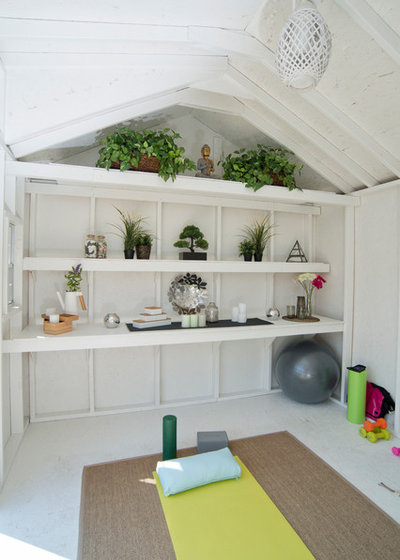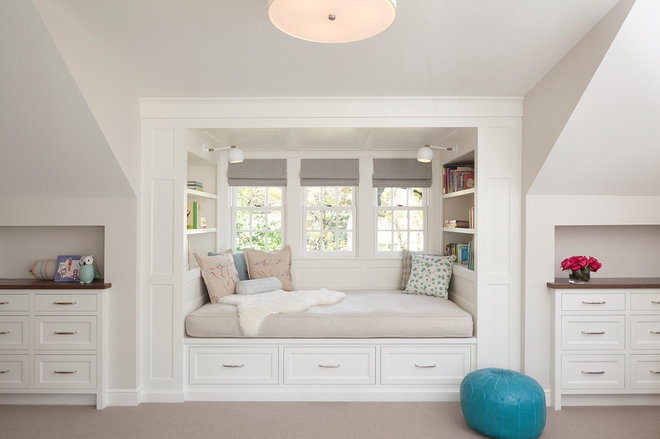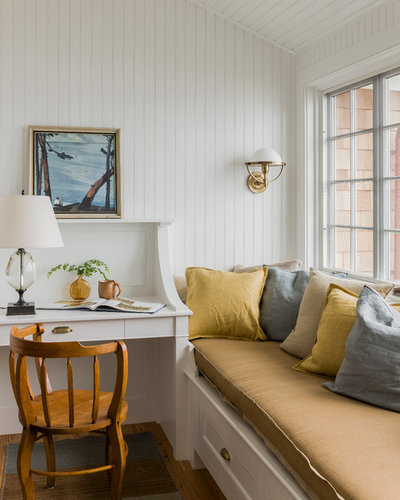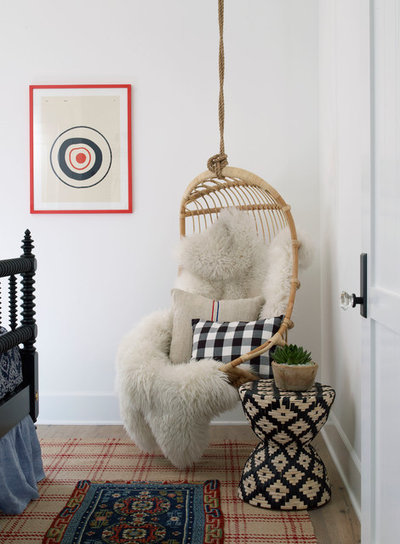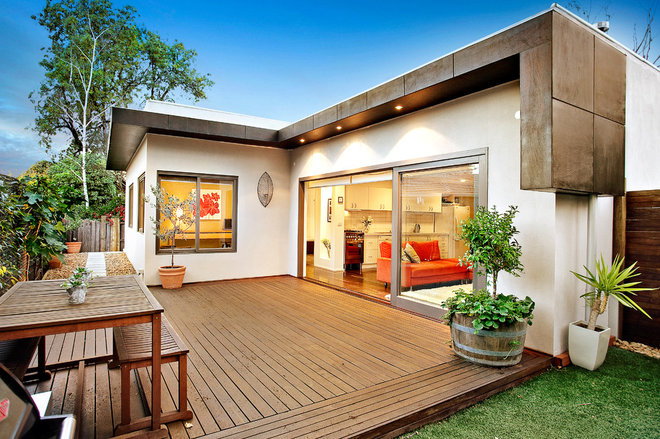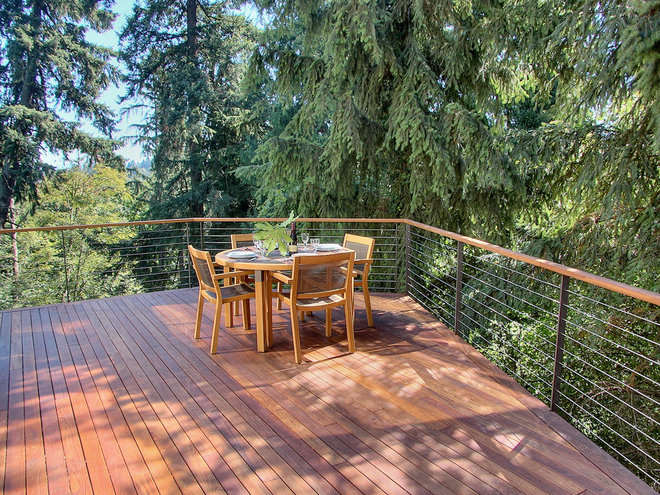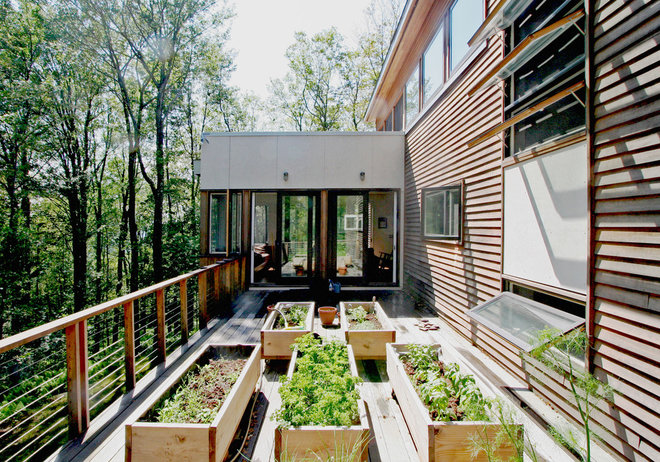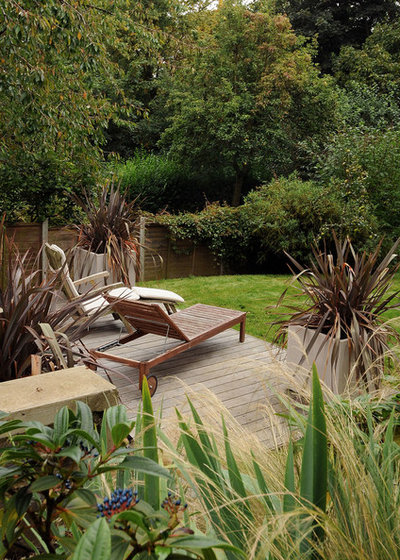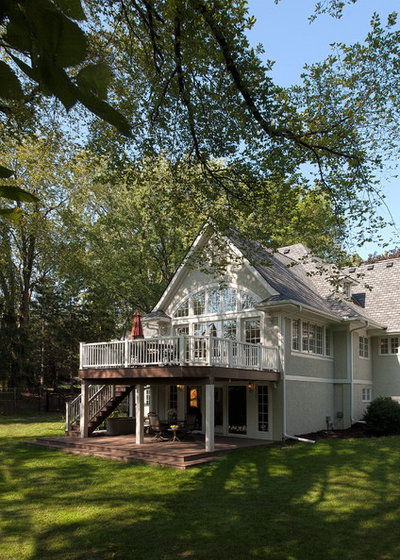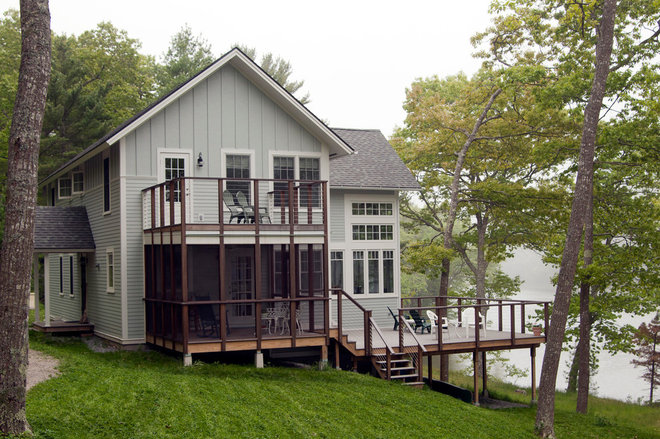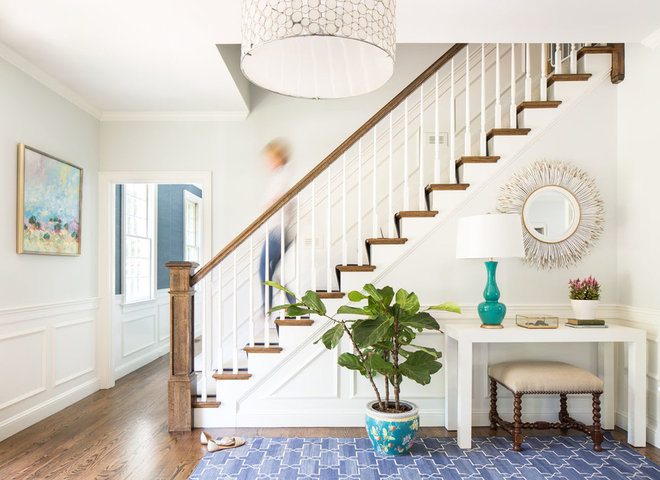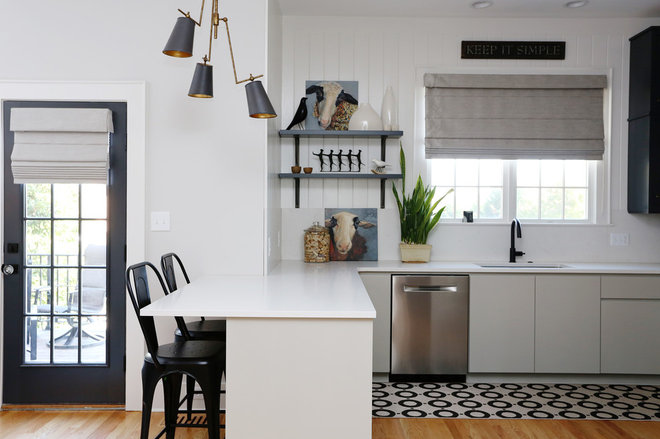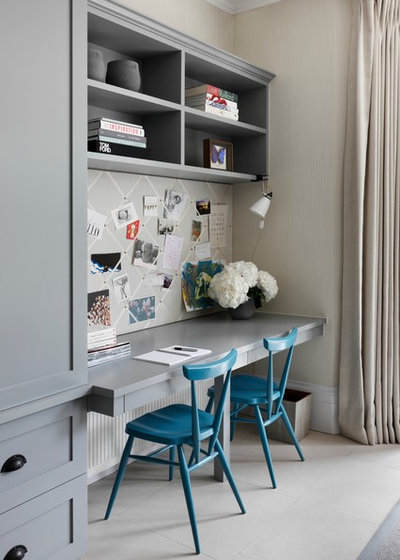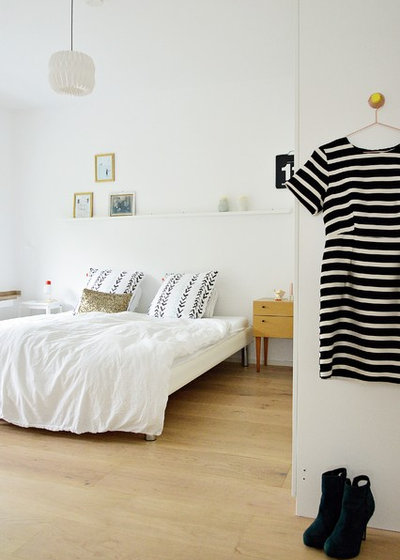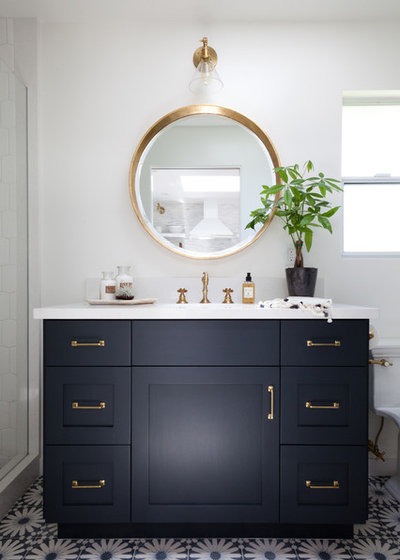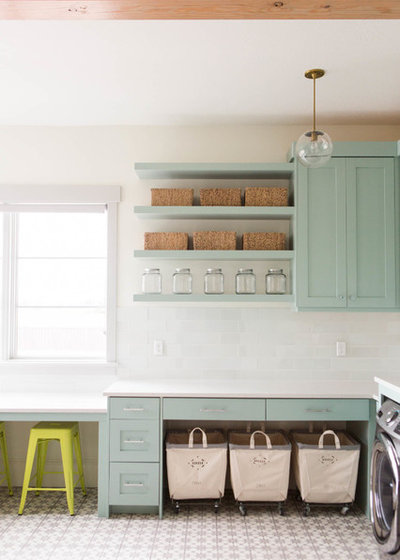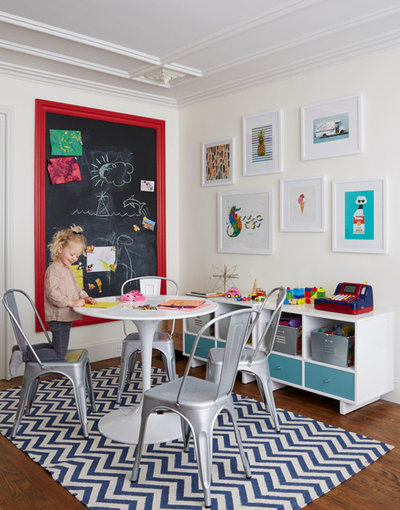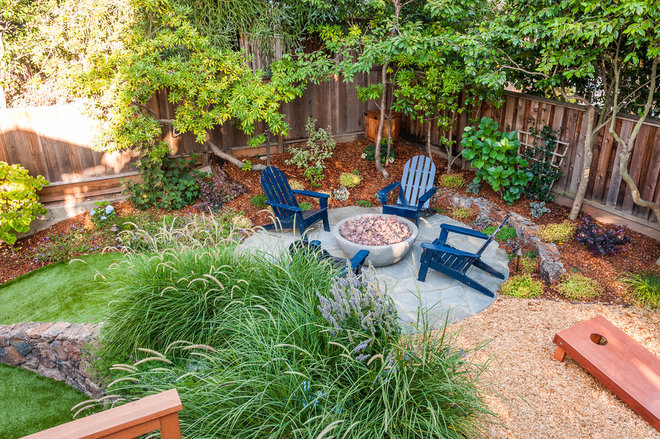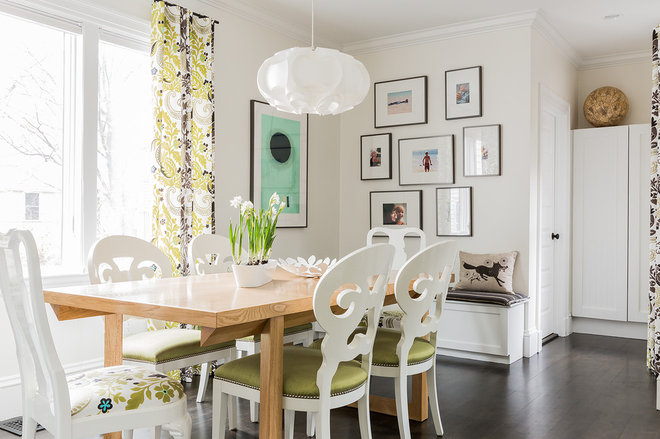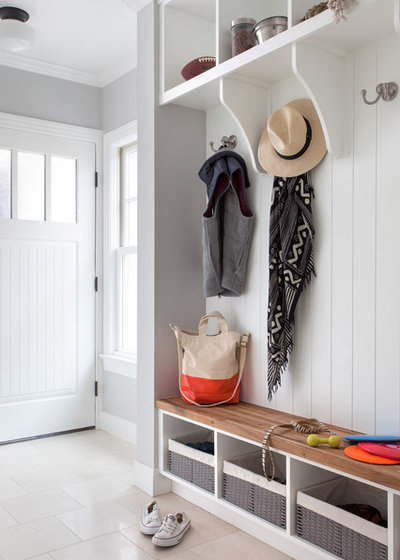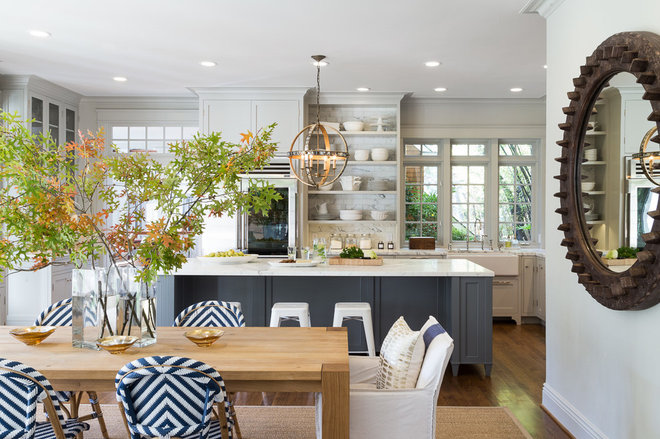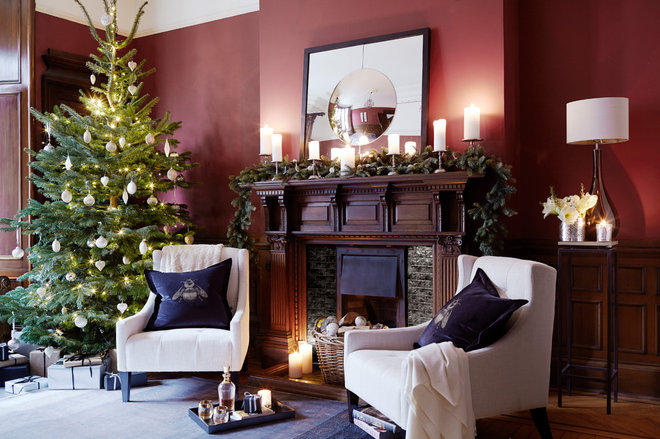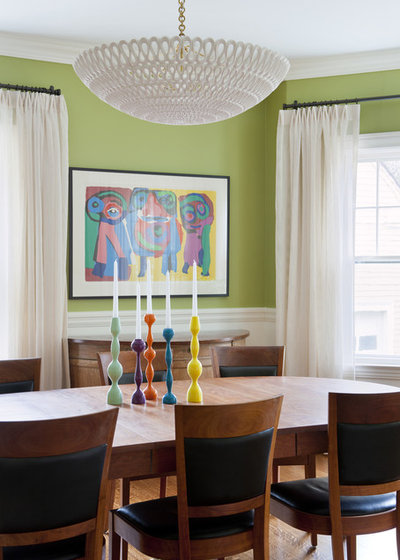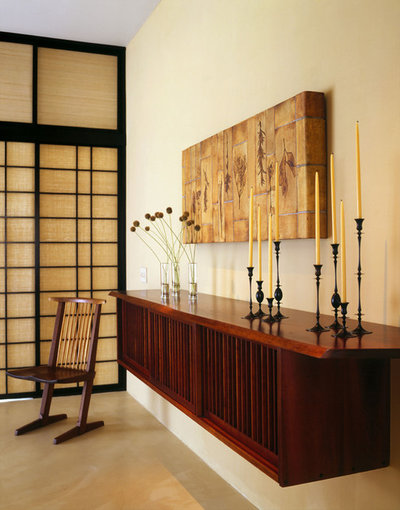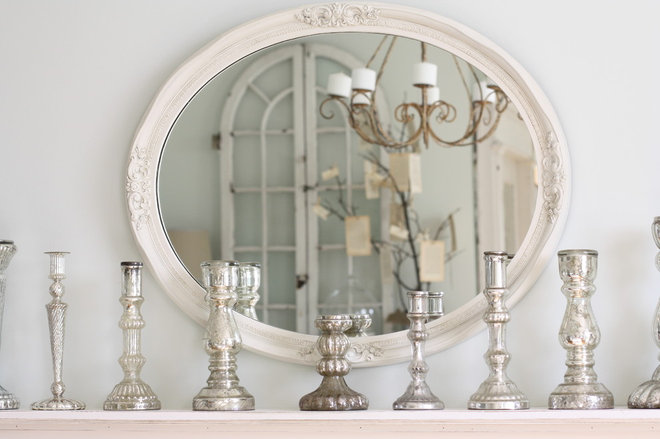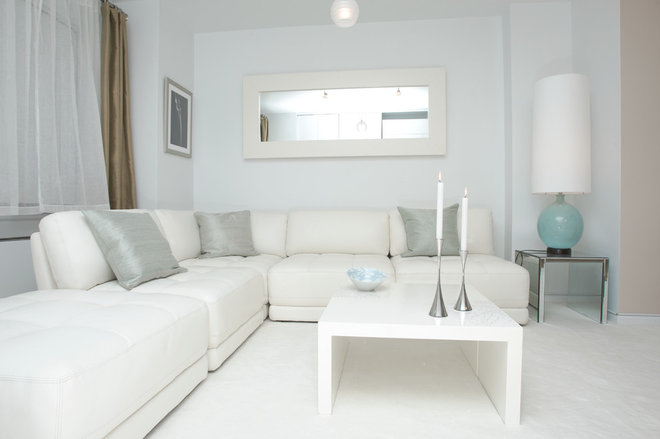Monthly Archives: January 2016
5 Tweaks for Updating Your Wood Deck
Whatever refinishing method you choose, know that moisture invites organisms into the wood that cause it to rot over time, so remove and clean up anything that is allowing water to collect in parts of the deck. Also, repair anything that may be habitually splashing water onto the deck, such as a leaky hose spigot.
To winterize, clean your deck of debris and remove and store your outdoor furniture in a dry place. Leaving your furniture out during the wet winter months can cause it to wear down more quickly.
You will likely need to hire a carpenter or contractor to help you design and install new railings, because they consist of detailed parts and connections. Have an idea of the railing type you want installed, and ask for product and design recommendations from the professional you hire. Also, check that your preferred railing type meets local codes before having it installed.
Keep water from pooling under your containers by placing a saucer beneath them to collect excess water or raising the containers off the deck.
Be aware that large containers can add a significant amount of weight to the deck, so it’s best to locate large, heavy containers over structural beams. Always consult a professional if you are unsure of your deck’s weight capacity.
Your Clutter-Clearing Plan for the New Year
With an entire new year ahead of you, decluttering your home may not seem so hard. But after January, when that new year energy begins to wane, the prospect of tackling such a big project tends to overwhelm.
Enter your New Year Clutter-Clearing Plan, a month-by-month guide to clearing the clutter from every room in your house. I’ve zeroed in on areas of the home that I find fit with certain events, such as back-to-school or spring fashion, but feel free to reorganize as you see fit to tackle specific areas of your home that need attention sooner.
No matter what, by the end of the year, your home should be feeling more spacious and, perhaps more important, you should be feeling more capable of maintaining a clutter-free space.
Getting started: Turbocharge your decluttering. If you’re feeling inspired and motivated by the new year, take advantage of that energy and spend a few weekends clearing clutter throughout the house. Making noticeable headway will help motivate you to keep up the decluttering effort in the coming months. Try to get the other members of your household onboard — but if they are not interested, don’t try to force it. Hopefully they will see the positive changes happening around the house and change their tune!
Habit to cultivate: Keep an empty reusable bin in a closet, and use it to corral items you plan to give away.
January: Kitchen and pantry. Give yourself a fresh start for the new year with a clean kitchen, decluttered cabinets and a healthy pantry and fridge.
- Toss worn dish towels or cut them up to make rags
- Sell or give away specialty small appliances and tools you seldom or never use
- Recycle or toss freebie cups and Tupperware containers without lids
- Toss expired food and spices
- Take stock of cookware and dishes; give away or sell pieces you do not need
Habit to cultivate: Clean out the pantry and fridge each week before shopping.
February: Home office — digital documents and papers. Get a jump-start on tax time by getting your files (paper and digital) in order.
- Sort through random stacks of paper; file, shred or recycle everything
- Streamline your files, shredding any documents you no longer need
- Use one calendar to keep track of all events
- Switch to paperless bills and statements if possible
- Clean out computer files and back up everything, using cloud-based storage and an external drive
Habit to cultivate: Sort your mail at the door, tossing junk immediately into a recycling bin.
March: Clothes and accessories.The seasonal transition is a good time to sort through clothing. Sort through winter clothes before storing, and pare back spring and summer clothes as you begin to wear them.
- Donate or sell clothes, shoes and accessories in good condition
- Have winter clothes laundered or dry-cleaned before storing until next year
- Try on all clothes for the upcoming season and give away or sell any items that do not make you feel good
Habit to cultivate: As soon as you wear something and notice it doesn’t fit, has a hole or doesn’t flatter you, toss it in a bag in your closet. When the bag is full, donate it.
April: Bath and beauty products and medicine cabinets. Give your daily routine a spring cleaning by sorting through all of those bottles and jars hiding in medicine cabinets, on counters and in drawers.
- Toss expired makeup and skin-care items, as well as anything you do not use or like
- Clean drawers and shelves before returning items
- Store heat- and moisture-sensitive items (medications and some skin-care products) away from the bathroom
Habit to cultivate: Keep a list of your favorite bath and beauty products and order them online rather than shopping in person. This helps avoid overshopping and impulse purchases.
May: Laundry room, linen closet, cleaning supplies. Cleaning routines are much easier and more pleasant when the supplies you need are neat and orderly. Sheets, towels and other household linens do not last forever — go through them this month and make some space.
- Recycle worn-out and stained towels, washcloths, sheets and tea towels at a textile recycling center — search for one near you through the Council for Textile Recycling
- If your child has graduated a bed size, donate the old bedding to charity
- Clean under sinks and in any cupboards where cleaning supplies are stored. Get rid of empty containers and products you tried but did not like
Habit to cultivate: Don’t downgrade old towels and sheets to “guest” status. Only keep linens you would personally want to use — get rid of the rest. Your guests deserve better!
June: Family room, playroom, media, art and schoolwork. The end of the school year is a good time to review collected artwork and school papers, and choose a small number of special pieces to save in a portfolio or document box.
- Edit schoolwork and art from the past year
- Gather a bag of DVDs, books and CDs to give away or sell
- Sort through toys and games; get rid of those your family no longer enjoys, as well as anything missing key pieces
Habit to cultivate: At the beginning of each school year, pick up a simple art portfolio. When your child brings work home, enjoy all of it for a while, but choose only a few special pieces to put in the portfolio.
July: Yard, shed, garage and tools. Being outdoors in midsummer makes this a good time to get outdoor tools and equipment in order.
- Get rid of broken tools and those you no longer need
- Sort through gardening supplies
- Toss worn-out outdoor furnishings and decor
- If you’ve been collecting items to sell, hold a yard sale this month. At the end of the day, take unsold items to a charity donation center
Habit to cultivate: Keep everything in your garage or shed on shelving, not on the floor. This helps prevent accumulating a pileup of junk and keeps your gear cleaner.
August: Photos. Photos seem to be one of the most problematic items for many people to keep organized. Use the lazy days of August to sort through old photos and make books or prints from new ones.
- Choose a few favorite photos from this year and have them framed
- Edit digital photos and back up using a cloud service as well as an external drive
- Make a photo album or book from recent photos
- Sort through any bins of loose photos and put them in acid-free photo boxes or simple albums
Habit to cultivate: Take a few extra moments to tag favorite digital photos each time you upload. Then when it’s time to print or make an album, you can go straight to your favorites.
September: Mudroom, entrances and junk drawers.Embrace the back-to-school spirit (whether or not you have kids) by getting the busiest zones of your house clutter-free this month.
- Put away stray items in entrances that belong elsewhere
- Add extra hooks or shelves if you need them to help corral items
- Sort through junk drawers, baskets, trays and any other spots that accumulate random junk
- Invest in drawer organizers or a wall-mounted organizer to keep small items neat
Habit to cultivate: Do an end-of-day tidy-up of the entryway, putting shoes, coats and random items back where they belong.
October: Dining room and entertaining supplies. With the big holidays coming up over the next few months, October is a good time to get ahead of the curve and sort out your entertaining arsenal.
- Get rid of worn-out and stained tablecloths, placemats and napkins
- Count your dinnerware and serving pieces and consider whether you have enough, too much or too little for the amount you entertain
- Get rid of decor, table linens and serving pieces that you don’t like or that no longer fit your lifestyle
Habit to cultivate: Just like creating a wardrobe with lots of pieces that work together, think of creating an entertaining wardrobe that you can mix and match, rather than having lots of distinct sets of dishes.
November: Hobbies and crafts.Get ready for holiday crafting and gift wrapping by clearing out your stash and organizing supplies this month.
- Clean out gift-wrapping supplies, tossing empty tape dispensers, out-of-ink pens and shreds of gift wrap and ribbon
- Downsize your craft stash by donating spare fabric scraps, yarn, scrapbooking paper and other materials — many organizations (schools, retirement centers and the like) are happy to accept donations of craft supplies, and there are even some craft-specific donation centers, like Scrap in San Francisco
- Keep works in progress together in bags, bins or boxes
Habit to cultivate: Take the time to put away your craft supplies neatly when you are done working. A messy stash makes it more likely you will buy something you already have simply because you couldn’t find it!
December: Holiday items and decor. With so much going on around the holidays, it’s wise not to expect too much of yourself when it comes to clutter-clearing. That said, with all of the new gifts coming in, it does make sense to do some paring back to preserve balance in the house.
- Give away holiday ornaments and decor that you did not use this year, or that you no longer love
- Toss broken ornaments and strands of lights that no longer work
- Exchange or give away gifts you received but know you will never use, and do not like — don’t keep things out of guilt. The one exception to this rule may be hand-knit sweaters. The knitter will never forgive you; that’s just how it is.
Habit to cultivate: Tell friends and family who ask (in advance of the holidays) that you and your family would prefer gifts that are experiential or edible. Most people honestly want to give you something you will like, and are happy for the guidance.
Originally Published on HOUZZ, by Laura Gaskill
Cooktops vs. Ranges – Which is right for you?
“Thinking about some new appliances for your kitchen? What makes sense for you?”
Denise Buck & Ed Johnson – DC Metro Realty Team
The centerpiece of your kitchen is your stove and oven. You have a couple options to choose from, cooktops and ranges. What is the difference? Find out here.
 Photo by: Shutterstock
Photo by: Shutterstock
Ah, the kitchen. Done right, it’s a sight to behold. But done poorly, it can come back to haunt you. Seemingly trivial differences often end up playing a large role in the room’s success. Today, we’ll focus on the centerpiece itself: Cooktops vs. Ranges.
Understanding the Differences
So what is it exactly that makes a cooktop different from a range? Well, in simple terms, a cooktop ditches the oven portion of a range and takes up only counter space. This means that the burner’s knobs and buttons are on top of the counter, rather than on the front. Of course, if an oven is needed, that means opting for a wall-mounted oven in addition to the cooktop.
A range, on the other hand, is both of these units in one. This means it’s a freestanding appliance that has the burners on top and the oven down below. The knobs and buttons on a range are typically on the front as to not get in the way of the pots and pans while cooking.
There is a third option, however, called a rangetop, which is essentially just a cooktop with the knobs and buttons placed on the front. It typically takes up a little bit more room than a standard, flat cooktop. For our purposes, we’ll group this option in the regular “cooktop” category.
Which type is right for you?
There are many benefits unique to a cooktop, but really it all depends on what your needs are. Is your kitchen cramped or full of space? Do you cook alone or as a team? Do you host large dinner parties? Do you suffer from bad knees or back? The questions are endless, but answering them is crucial when deciding which would suit you best. Here’s a handy guide to help you quickly decide which option might be your best bet.
Related: Gas Vs. Electric – A Heated Debate
Cooktop Benefits:
• Cooktops require a much smaller cutout in your counter space, and are surrounded on all four sides, leaving ample room for cabinet space below.
• Because there isn’t an oven below it, you don’t have to stand by extra heat (which usually radiates from the oven) if you use both appliances at the same time.
• Purchasing an oven separately gives the option for you to select a single ordouble wall-mounted unit.
• Cooktops are also better for people with knee or back problems because their accompanying ovens are more at arm height.
• If you have small children in the house, a cooktop could be a safer choice because the control settings will be out of their reach.
• Glass, or smooth cooktops also make for much easier cleaning, since things like burners don’t need to be removed.
• Cooktops offer more flexibility in burner style, size and options like induction burners.
• Electric cooktops also provide constant, even heat and can maintain very low heat for simmering.
• If your kitchen already has a focal point, such as a window, sink, view or back splash, a cooktop is a good choice so it will let the other features stand out.
• A cooktop is best for multiple-cook scenarios because of separate cooking and baking zones.
• Oven cooking can be more ergonomic: at eye and arm level.
Range Benefits:
• A range is best for small kitchens with limited space because it houses the cooktop and oven in a single appliance and location.
• Ranges are easier to install as well as less expansive, and there are more options at the lower end of the budget spectrum.
• If your kitchen needs a strong focal point, a range can help bring the room together.
• There are several different types, sizes and cooking styles available, including freestanding, slide-in, drop-in, double oven and dual-fuel ranges – all at an added cost.
Our Favorites:
Now that the breakdown above has given you a sense of what fits your needs best, let’s take a look at some of the best options in each category. Of course, there is a huge variety of features you can choose from, but these top models have proven themselves time and time again. Our top 3 favorites come from scouring sources like Top Ten Reviews, Consumer Reports, Reviewed.com and our own personal experience.
Cooktops:

This 30” induction cooktop costs the same as a regular electric cooktop but offers additional benefits, such as direct cooking, responsive control, quick boiling, energy efficiency and consistent low temperatures. Its smooth, sleek design and flattop controls makes for easy cleaning as well. (Est. price: $1,209–$1,349)

Coming in both 30-inch and 36-inch designs, this first-class cooktop features stainless steel trim, illuminated controls, continuous cast iron grates and a Lodge griddle. Outperforming the competition on almost every metric, the high temperature was strong enough to sear a steak, while the low was light enough to melt and simmer. If you’re after the best of the best, you simply can’t beat the GE Café. (Est. price: $1,499–$1,599)

With touch controls and curved stainless steel trim, this 30-inch electric cooktop is the epitome of modernity. Boasting a wide range of temperatures and quick boiling times, the Flex-2-Fit element offers three separate sizes to match your collection of pots and pans. On the other end of the spectrum, this cooktop was able to reach temperatures as low as 86ºF – perfect for simmering. (Est. price: $1,073)
Ranges:

Highly affordable, Frigidaire’s new FGGF3054MF comes with five burners, continuous cast iron grates with an optional griddle, true convection, a temperature probe, quick preheat times, a fast boil, low simmer temperatures and superb baking. Now that’s value. (Est. price: $949–$1,149)

When it comes to basic gas ranges, the Amana AGR5630BDW is as good as it gets. Sure, cheaper ranges exist, but none of them match this one’s cooking performance, contemporary design and digital controls. Chock -full of features, unlike most price-conscious ranges, this one offers a self-cleaning option, a storage drawer, a broiler, Easy Touch electronic controls, Temp Assure™, four sealed gas burners and a versatile cooktop offering power from 5,000 to 12,500 BTU. Plus, when you’re all finished cooking, the Spillsaver™ upswept cooktop makes for an easy cleanup. (Est. price: $549)

This beautiful double-oven range comes with its own suite of unique technology. Besides being able to bake multiple dishes that require different temperatures at the same time, it also has a quick-heating infrared broiler, an EasyClean coating that makes self-cleaning cycles more effective and top-of-the-line temperatures and boiling times. What does all that mean for you? It’s one of the best cooking experiences money can buy. (Est. price: $1,625)
In Conclusion
Now that you have a good sense of the differences between a cooktop and a range, the benefits and some of our favorites, you’re well on your way to creating your perfect kitchen. But don’t let those new appliances go unprotected. Protect your budget form unexpected repairs and replacements with a Home Warranty Planfrom American Home Shield®. Happy cooking!
Originally Published by AHS (American Home Shield)
The Simple Way to Remove Wax From Candlesticks
If by chance there’s some residue left, then you may have a choice of cold or hot. For the cold method, you can try freezing the wax until it chips off easily.
Place the candlestick in a plastic bag to protect it from excessive moisture and put it in the freezer for about 15 minutes, then remove it and chip off or wipe off the remaining wax. Another option is to put an ice cube in a plastic bag and hold it on the wax until the wax freezes. “If candlesticks are placed in the freezer, ensure that they are completely dry before adding new candles, as water may have condensed on them,” Bermudez says. “Water in candleholders can result in the candle flame spitting.”
